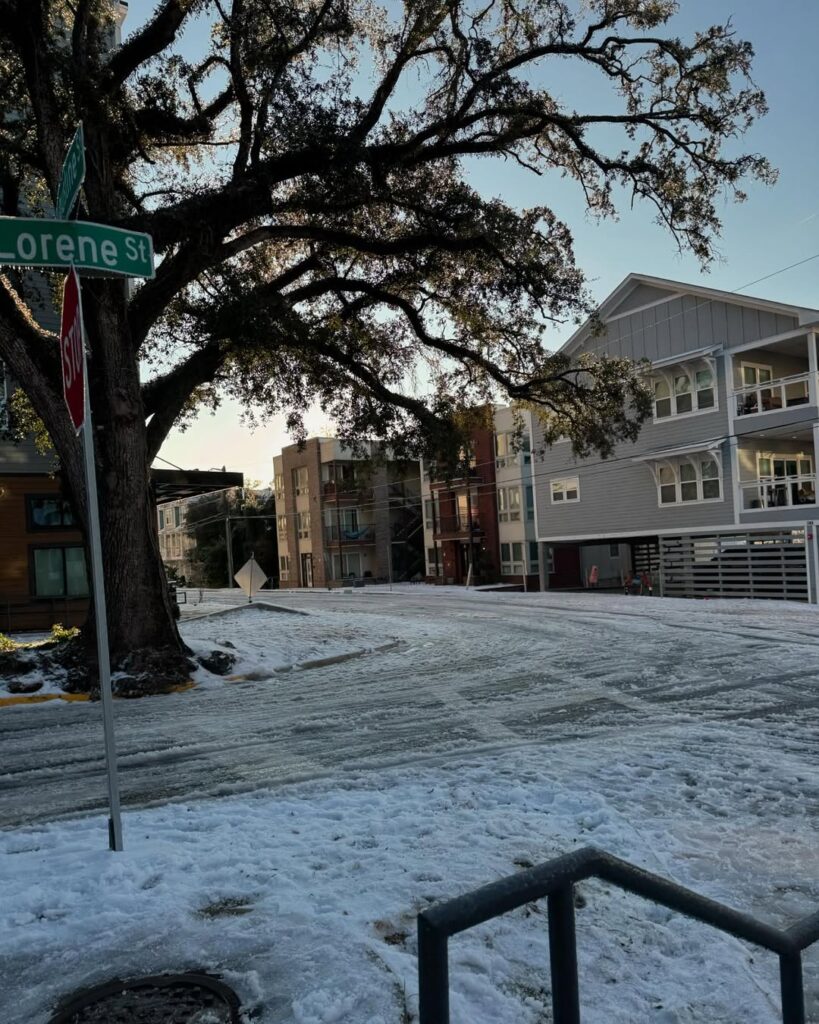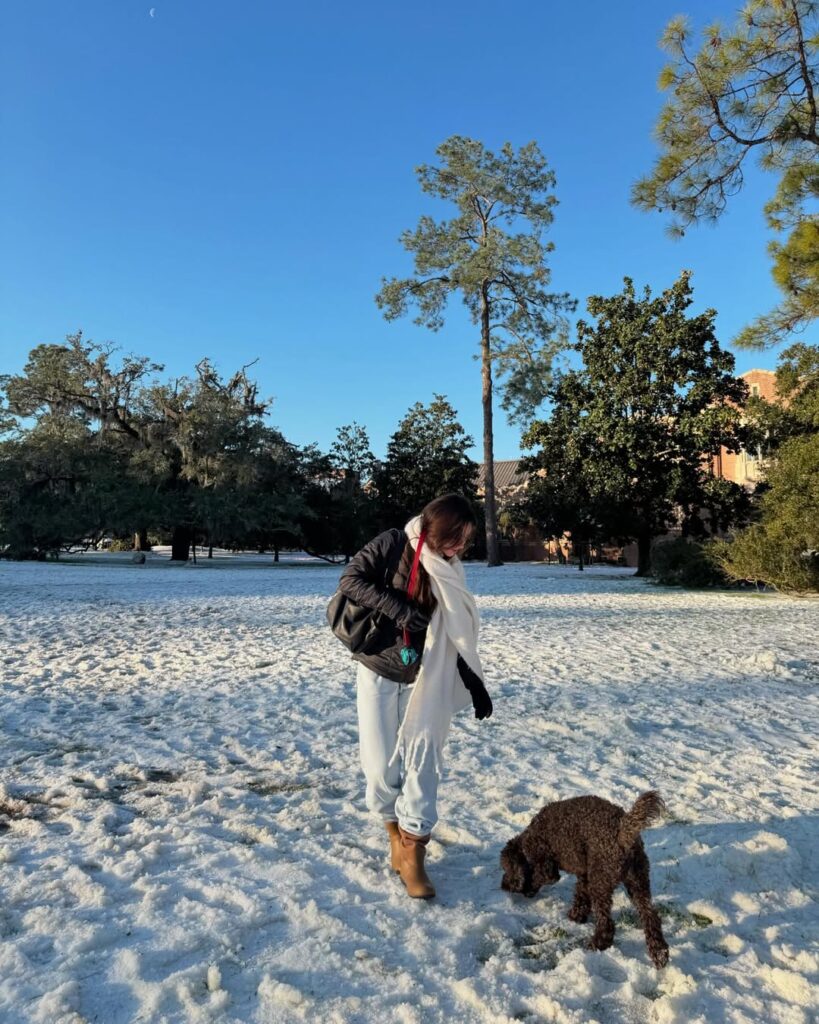Snowfall in Florida sounds like a paradox, a contradiction wrapped in the warm embrace of palm trees and sun-soaked beaches. Known for its subtropical and tropical climate, the Sunshine State rarely associates itself with the icy whispers of winter. Yet, the phenomenon—though rare—has occurred. And when it does, it transforms the ordinary into the extraordinary, blanketing memories in delicate frost and reminding residents and visitors alike that even the most unlikely events can manifest, however briefly.

Florida is not the kind of place where children grow up expecting snow days. Instead, they dream of beach outings in December, of oranges ripening in groves through the winter months, and of wearing flip-flops year-round. But snowfall, while infrequent, is not entirely unheard of in the state’s history. The northernmost regions, particularly the Panhandle and the interior parts near Tallahassee and Gainesville, have occasionally received light dustings. These rare events are usually the result of an unusual combination of atmospheric conditions—a cold air mass diving deep into the southeastern United States and a sufficient amount of moisture in the air to produce precipitation. When these align just right, snowflakes can descend like miracles from the sky.

The most famous snowfall event in Florida occurred on January 19, 1977, when flurries were reported as far south as Miami, Fort Lauderdale, and West Palm Beach. It was the first time snow had been recorded in those cities in modern weather history. On that morning, residents stepped outside in disbelief. Snowflakes drifted through the warm air, landing on car windshields and front lawns, melting almost immediately. Local news coverage captured the awe and confusion of people witnessing something that defied their sense of reality. For a few brief hours, South Florida looked more like a misplaced scene from a northern winter postcard than its usual tropical self.
Children who had never seen snow before tried to catch flakes on their tongues. Some families gathered what little snow they could from windshields to shape tiny snowballs or miniature snowmen, knowing that within minutes it would vanish. The novelty of the moment etched itself into collective memory. People still talk about that day like it was a dream—surreal, magical, and fleeting.

But beyond the wonder, snowfall in Florida brings with it a number of practical challenges. Because snow is so rare, the infrastructure to deal with icy conditions is virtually nonexistent. Roads can become hazardous quickly, as drivers unaccustomed to slippery surfaces struggle to maintain control. Cities and counties have little to no snow removal equipment. Even light accumulations can close schools, delay flights, and disrupt daily life in unexpected ways.
In a broader metaphorical sense, “Snowfall in Florida” has also come to represent the unexpected, the rare, and the beautiful intrusions into routine life. Much like a sudden shift in weather, life often surprises us. It can be a serendipitous meeting, a spontaneous decision that changes the course of a career, or an emotional revelation that alters relationships. These moments are like snowfall in a warm state—astonishing, impermanent, but profoundly impactful.
For artists and writers, the image of snow falling on Florida has served as a rich source of inspiration. It suggests juxtaposition—cold meeting heat, white against green, silence amid a place known for noise and movement. In fiction and poetry, such an event is often symbolic of change, of time slowing down, or of impossible beauty. It’s nature’s way of reminding us not to be so certain about the way things are supposed to be.

Climate scientists have also studied Florida’s rare snowfalls with interest. Though they are not indicative of long-term climate trends by themselves, these anomalies offer data points in understanding the complexity of weather systems and how climate variability manifests across different geographies. In recent decades, average temperatures in Florida have trended upward, making snowfall even more unlikely in the future. Some view this with a sense of loss, as one more whimsical natural event fades further into rarity.
For longtime Floridians, stories of snow are often passed down like folklore. “I remember when it snowed in ’77,” grandparents might say to wide-eyed grandchildren, who can hardly imagine ice forming on their front porch. Those who were children during such events recall the thrill of waking up to find their world transformed, even if only for an hour. The snow might have been gone by noon, but the memory lasts a lifetime.

The anticipation of snow—no matter how unlikely—still lives on in the northern parts of Florida. Every winter, when temperatures dip into the 30s or lower, some residents hope, if only half-jokingly, to see flakes fall again. Meteorologists in the region occasionally stoke that hope when forecasts call for “a chance of wintry precipitation,” sending local communities into a flurry of speculation and social media chatter.
Despite its rarity, the idea of snow in Florida captivates because it represents a break from normalcy. It forces people to look at their environment differently, to consider possibilities they hadn’t imagined. Snow covering the fronds of a palm tree or settling on a sandy beach challenges perceptions and offers a moment of wonder in a world that often seems predictable.

Even in more recent times, light snow or sleet has occasionally touched parts of the Panhandle. For example, in January 2018, light snow dusted Tallahassee, marking the first measurable snow there in nearly three decades. Though brief, the event reignited the same sense of astonishment that snow in Florida always seems to bring.
As climate patterns continue to shift, the future of snow in Florida remains uncertain. It may become even more of a historical footnote, a rare event spoken of with nostalgia. Or, in the unpredictable dance of nature, it may surprise everyone again. One day, without warning, flakes may drift down through the humid air once more, sending children running into their yards and adults reaching for their phones to document the fleeting marvel.
Snowfall in Florida is a reminder that the world still holds surprises. It is proof that even in places defined by warmth and sunshine, there is room for the unexpected. It invites us to pause, to marvel, and to remember that nature is full of contradictions, capable of astonishing us when we least expect it.



